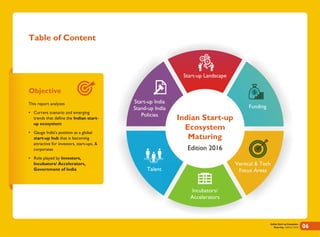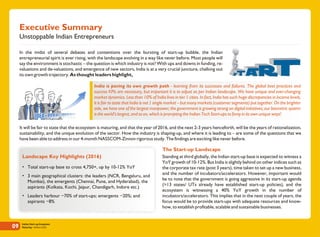- India's start-up ecosystem is maturing, with the number of start-ups expected to grow 8-10% to over 4,750 by the end of 2016.
- Total funding is estimated to reach nearly $4 billion in 2016, though this represents a decline from previous years as investors focus on profitability.
- The top three start-up hubs of Bengaluru, Delhi-NCR, and Mumbai are home to approximately 70% of Indian start-ups.










